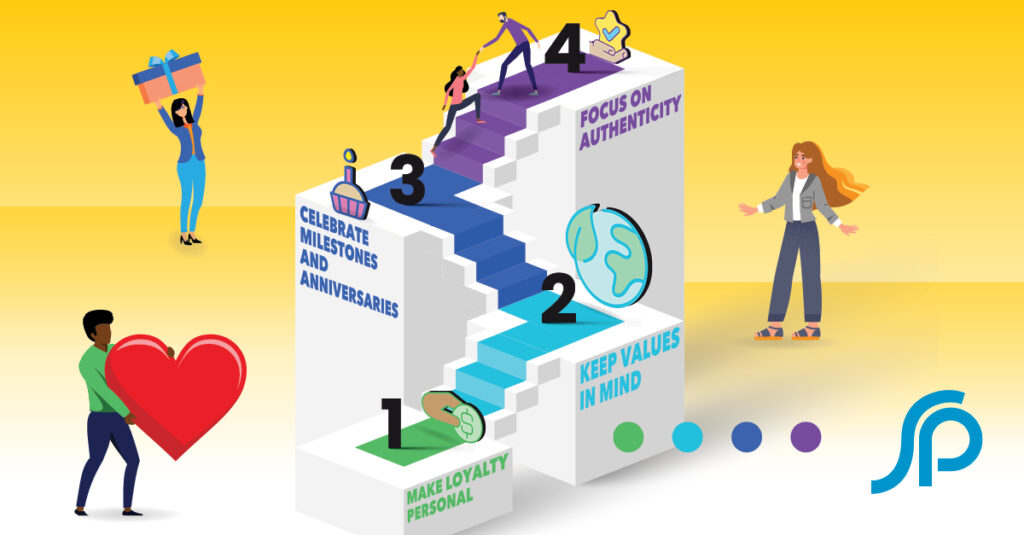The Role of Customer Retention Marketing

Today’s consumers have more choices than ever, which means brands need to work harder than ever to develop and maintain loyalty. Customer retention marketing targets these existing customers in hopes of turning them into long-term repeat customers, and in today’s marketplace, it’s going to take the right blend of creativity and authenticity to stand out over and over again.
WHY RETENTION MARKETING MATTERS
Attracting first-time customers is expensive, and one experience is not enough for brand loyalty to root and bloom. Loyalty takes time and effort to build, and crafting a sustainable, engaging brand is key in this fast-changing world. One approach, suggested by experts in the Harvard Business Review, involves four “prongs” to keep customers engaged and keep the brand feeling fresh: mastery (offering exclusive rewards for using and engaging with the brand and its products), accessibility (making “entry-level” products as affordable, widely available, and widely appealing as possible), cadence (keeping up a steady stream of new content), and ensnarement (keeping customers coming back by switching costs and using network effects). This kind of retention marketing and brand-building requires long-term thinking and effort.
The “decline” of brand loyalty also has a generational component to consider. The research found that the oldest shoppers tend to be the most loyal, while the youngest generations are more interested in finding disruptors and new ways of doing things: 56% of Boomers are “brand loyalists,” while only 37% of Gen Z fall into the same category. That same research also found that 80% of shoppers use comparison shopping – mostly online – before making a final product purchase decision.
Simply attracting a customer once – perhaps during that “comparison shopping” stage – isn’t enough to garner repeat visits. Brands must prove themselves time and time again to retain customers in the long run.
SIMPLE STEPS FOR TODAY’S MARKETERS
So, what can marketers do to increase the odds of brand loyalty among their customers? Here are a few suggestions based on current consumer behaviors.
- MAKE LOYALTY PERSONAL
The “traditional” loyalty program has been a fairly structured model: think loyalty cards, basic rewards, and the occasional event or sale. Today, consumers are looking for something a little more in-depth and a little more personal. Brand loyalty is about brand relationships, so look for ways to reward loyalty in a more personal, customized way tailored to the individual shopper. Everyone has tons of data, so use it to make marketing more personal. This could be as simple as responding to collected customer data with a recommendation or coupon targeted at customers’ browsing choices or selected preferences: even those simple steps can improve sales and loyalty.
- KEEP VALUES IN MIND
Younger shoppers – aka the generations where brand loyalty is waning – are more likely to view their purchasing behavior as an extension of their personality and core values. 68% of Millennials and Gen Z view shopping this way, compared with just 43% of Boomers. That means these younger consumers are more likely to stay loyal to a brand whose values align with theirs. To set it apart, highlight the “good” your brand is doing, whether it’s ethical manufacturing practices, a sustainability pledge, or something else.
- CELEBRATE MILESTONES AND ANNIVERSARIES
Who doesn’t love to be celebrated? A straightforward way to help build brand loyalty is to celebrate and recognize existing customers. Sending out a gift or a special offer on a birthday or an “anniversary” of being a customer can make those customers feel like the brand pays attention and values them – and it also can nudge them into making a purchase when that special offer comes through.
- FOCUS ON AUTHENTICITY
When faced with challenges like dwindling brand loyalty, it’s tempting to look for a cure-all or a flashy promotion that will “magically” grab everyone’s attention. However, today’s consumers are much too savvy for that, and gimmicks are more likely than not to backfire. Instead, consumers will be loyal to brands that provide consistent, authentic, and high-quality products and services. Being the “reliable” one often does more to build loyalty than elaborate programs.
Share
